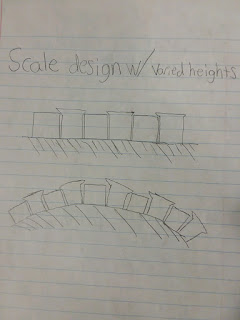Week 3 Progress
In this week, we worked to brainstorm on the ideas of the design of the scales on the armor and the material to be used for the padding and shock absorption.
We thought of several designs which would be suitable to use and planned out a specific model for our scale units from all sides.
Top view
This structure was partially inspired by the bee hive structure. An octagon is placed in the center surrounded by four squares on the sides, followed by another octagon making an intricate network of plates.
The purpose is to minimize the vacant space between each unit in order to provide the maximum protection possible. The figure of the proposed design has been displayed below.
Cross Sectional View
This view is only limited to the scales till now. We have proposed two theories related to this-
1. Some of the scale units should be flared out. This will help in covering the maximum area possible, not leaving behind spaces when it is straight or even bent. Hence it would ensure a continuous protective covering at all times irrespective of the configuration of the pad. We have planned that the octagon in the center should be flared out and all the units adjacent to it should be straight. The other octagon which is not at all connected to the flared out octagon, should be flared out again.

We thought of several designs which would be suitable to use and planned out a specific model for our scale units from all sides.
Top view
This structure was partially inspired by the bee hive structure. An octagon is placed in the center surrounded by four squares on the sides, followed by another octagon making an intricate network of plates.
The purpose is to minimize the vacant space between each unit in order to provide the maximum protection possible. The figure of the proposed design has been displayed below.
Cross Sectional View
This view is only limited to the scales till now. We have proposed two theories related to this-
1. Some of the scale units should be flared out. This will help in covering the maximum area possible, not leaving behind spaces when it is straight or even bent. Hence it would ensure a continuous protective covering at all times irrespective of the configuration of the pad. We have planned that the octagon in the center should be flared out and all the units adjacent to it should be straight. The other octagon which is not at all connected to the flared out octagon, should be flared out again.

2. Our second proposal is to build the units with and uneven bottom surfaces. The curves at the bottom will increase the surface area for attachment of each unit to the base. The figure explaining this theory has been uploaded below. Theoretically greater the attachment surface area, greater will be its strength. Hence through this design we hope to increase the strength of the attachment of the scales to the base foundation.


Comments
Post a Comment